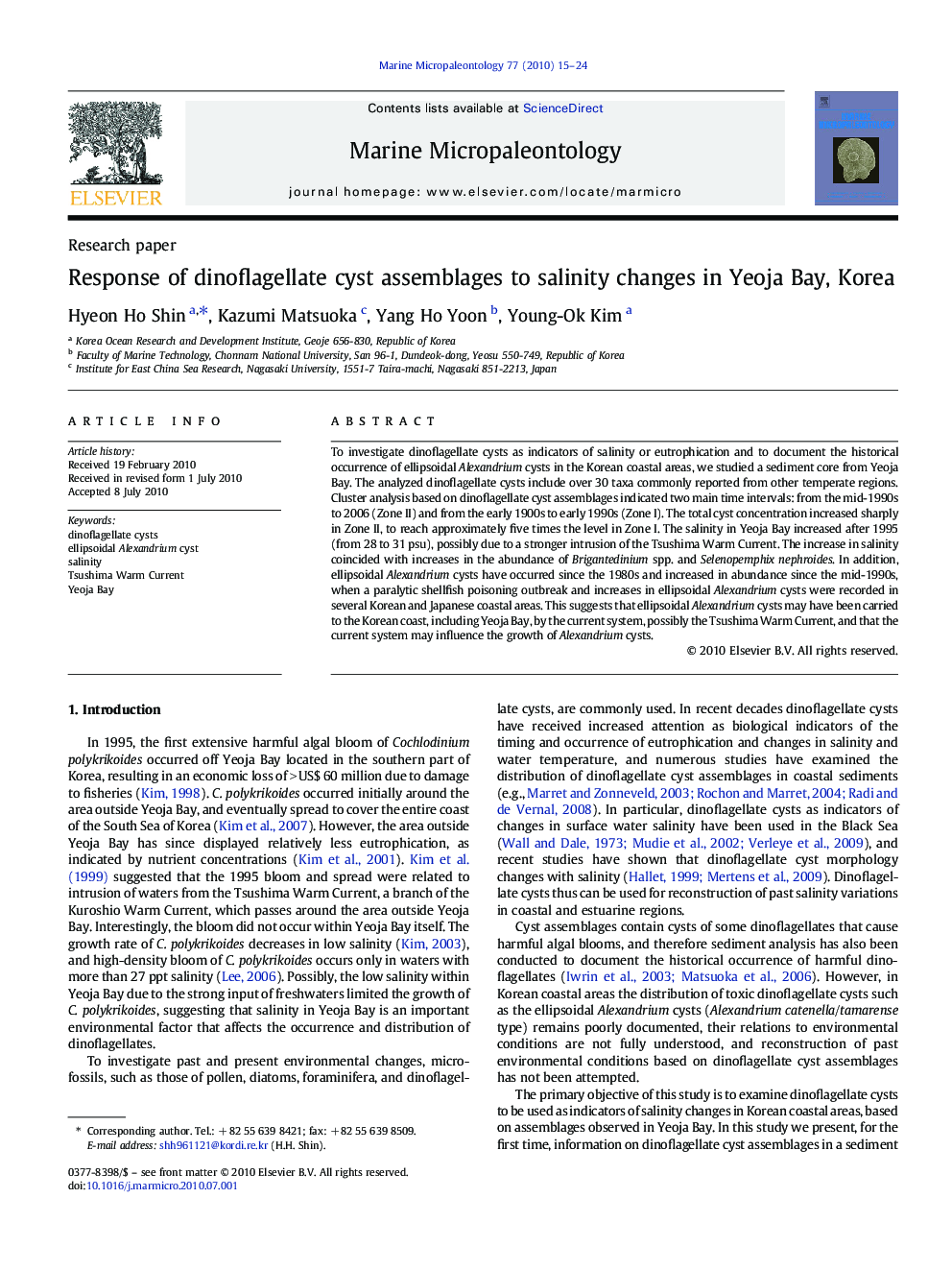| Article ID | Journal | Published Year | Pages | File Type |
|---|---|---|---|---|
| 4749112 | Marine Micropaleontology | 2010 | 10 Pages |
To investigate dinoflagellate cysts as indicators of salinity or eutrophication and to document the historical occurrence of ellipsoidal Alexandrium cysts in the Korean coastal areas, we studied a sediment core from Yeoja Bay. The analyzed dinoflagellate cysts include over 30 taxa commonly reported from other temperate regions. Cluster analysis based on dinoflagellate cyst assemblages indicated two main time intervals: from the mid-1990s to 2006 (Zone II) and from the early 1900s to early 1990s (Zone I). The total cyst concentration increased sharply in Zone II, to reach approximately five times the level in Zone I. The salinity in Yeoja Bay increased after 1995 (from 28 to 31 psu), possibly due to a stronger intrusion of the Tsushima Warm Current. The increase in salinity coincided with increases in the abundance of Brigantedinium spp. and Selenopemphix nephroides. In addition, ellipsoidal Alexandrium cysts have occurred since the 1980s and increased in abundance since the mid-1990s, when a paralytic shellfish poisoning outbreak and increases in ellipsoidal Alexandrium cysts were recorded in several Korean and Japanese coastal areas. This suggests that ellipsoidal Alexandrium cysts may have been carried to the Korean coast, including Yeoja Bay, by the current system, possibly the Tsushima Warm Current, and that the current system may influence the growth of Alexandrium cysts.
